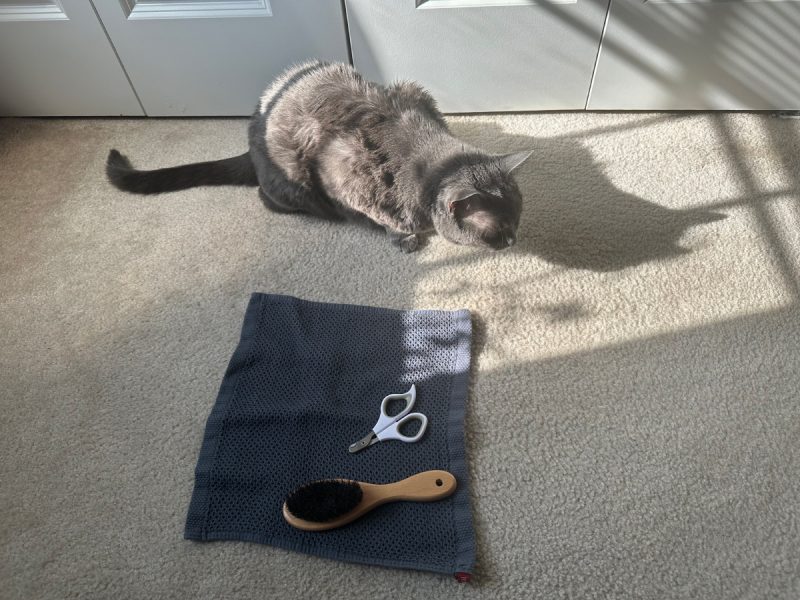
Brushing your cat’s coat keeps it healthy, reduces shedding, redistributes the natural oil, and sometimes allows you to practice first-aid skills. Veterinarians and behavioral specialists recommend introducing grooming to cats when they’re kittens, and while I agree with their advice, Olga’s early experiences were more violent than beneficial.
Youthful Aggression
As a kitten, her oversized head and potbelly gave her a comical appearance, but underneath the cute exterior lay the soul of a psychopath. I let her examine the brush and left it on the couch for a few hours before attempting a grooming session, but my efforts were in vain. After sniffing it and hitting it a few times, she ignored it, which seemed promising since she didn’t consider it a threat.
However, when I tried to brush her, she curled into a ball and attacked my hand with her sharp teeth and claws. I made several attempts, but grooming a cat is challenging when she doesn’t allow you to touch her back, side, or belly. She only allowed petting on her neck and head, so I gave up trying to brush her until she became an adult and calmed down.
Early Days of Grooming
She kept her coat clean as a kitten and never developed mats or tangles. After she was around a year old, I bought a softer brush that was gentler on her light coat. She didn’t attack me but kept trying to eat the brush. Then, I tried bribing her, a positive reinforcement classic, when she behaved after a grooming session.
I gave her a treat when she sat still for more than a few seconds, and it seemed to work. Subsequent sessions were more productive; eventually, I could brush 2/3rds of her coat without getting injured or frustrated.
Present-Day Grooming
Sometimes, I think rewarding for good behavior worked too well. When I brush her fur or trim her nails, she purrs, moves around, and tries to rub her head on my neck. I know purring sounds more appealing than scratching and biting, but at least when she attacked me, she generally stayed in one place.
She’s not as food-motivated as she was when she was younger, but she gets excited and more affectionate before her feeding times. I don’t give her treats after grooming or nail-trimming sessions, but she still expects them and continues to use manipulative love to convince me she’s malnourished.
Luckily, Olga’s thin coat doesn’t require frequent brushing, and her sound-barrier-breaking tongue handles most of the daily maintenance. She only resorts to violence after I trim her front claws and move on to the rear ones. I usually trim one and two before she screams and tries to hit me in the face. I considered buying a hockey mask and Kevlar sleeves to protect myself, but hydrogen peroxide and bandages are more affordable. Besides, she’s too relaxed sometimes, and I like seeing my miniature panther in attack mode. It takes me back to the days of her violent youth.
- Read his previous article: Is Disciplining a Cat Useful or Effective? Olga Says No!